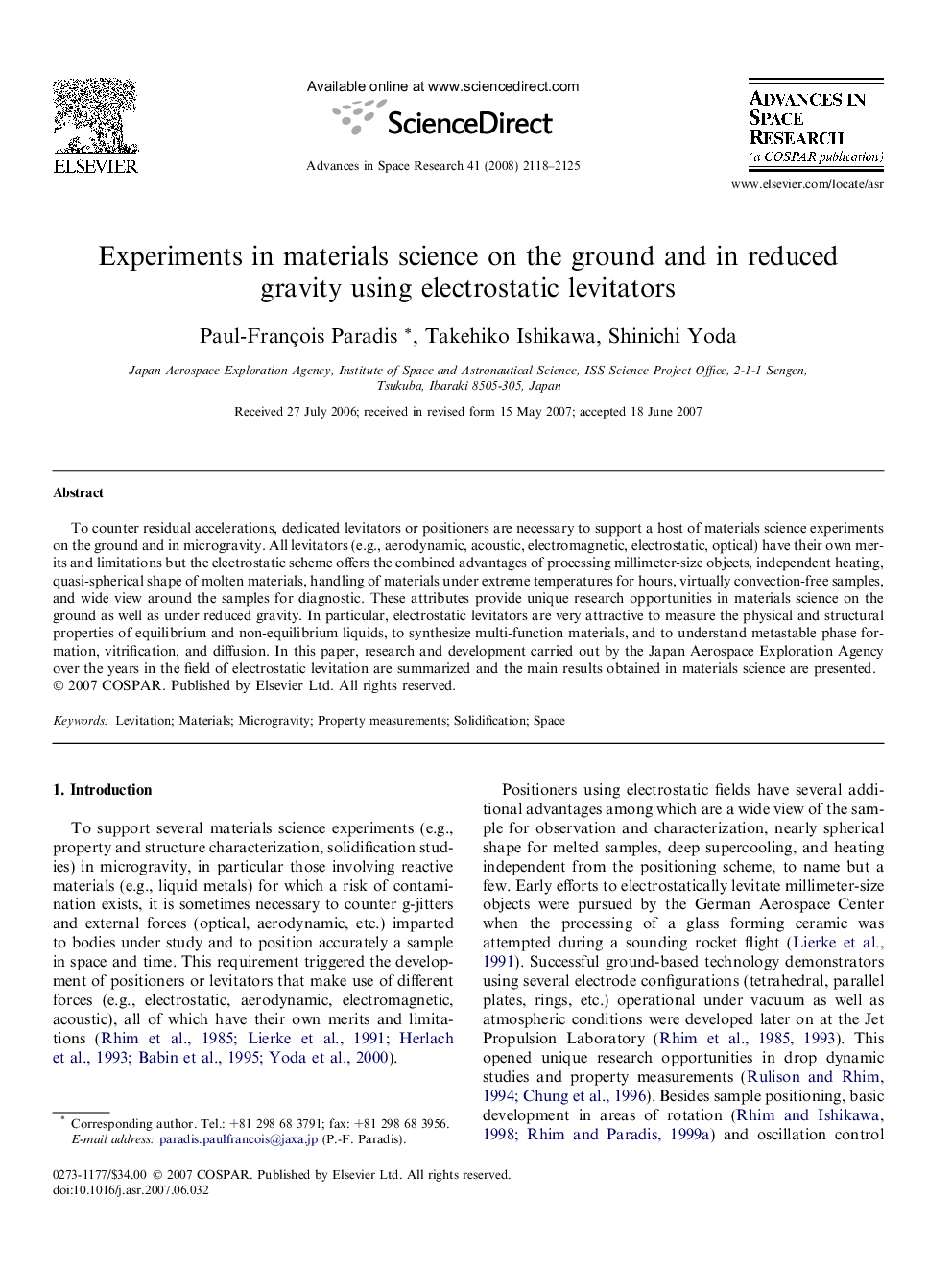| Article ID | Journal | Published Year | Pages | File Type |
|---|---|---|---|---|
| 1766860 | Advances in Space Research | 2008 | 8 Pages |
To counter residual accelerations, dedicated levitators or positioners are necessary to support a host of materials science experiments on the ground and in microgravity. All levitators (e.g., aerodynamic, acoustic, electromagnetic, electrostatic, optical) have their own merits and limitations but the electrostatic scheme offers the combined advantages of processing millimeter-size objects, independent heating, quasi-spherical shape of molten materials, handling of materials under extreme temperatures for hours, virtually convection-free samples, and wide view around the samples for diagnostic. These attributes provide unique research opportunities in materials science on the ground as well as under reduced gravity. In particular, electrostatic levitators are very attractive to measure the physical and structural properties of equilibrium and non-equilibrium liquids, to synthesize multi-function materials, and to understand metastable phase formation, vitrification, and diffusion. In this paper, research and development carried out by the Japan Aerospace Exploration Agency over the years in the field of electrostatic levitation are summarized and the main results obtained in materials science are presented.
